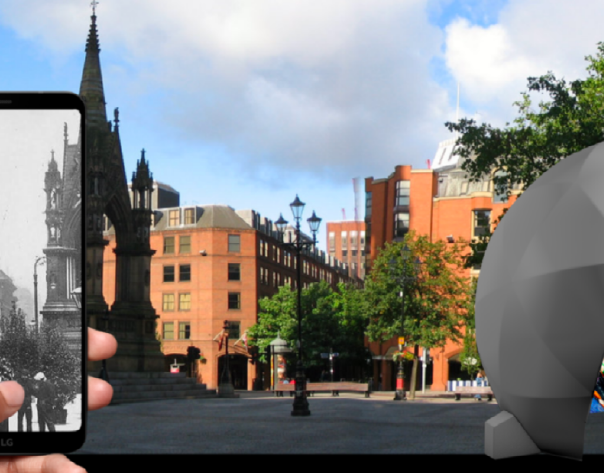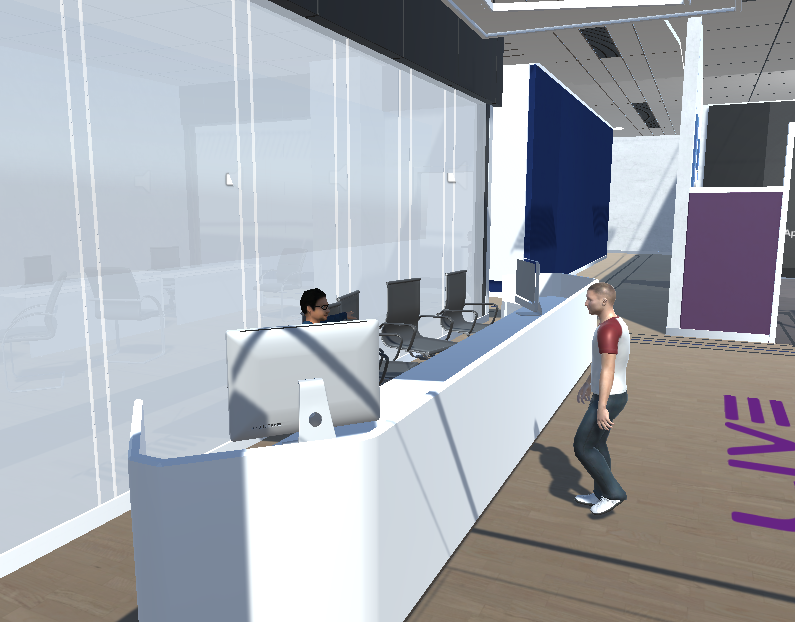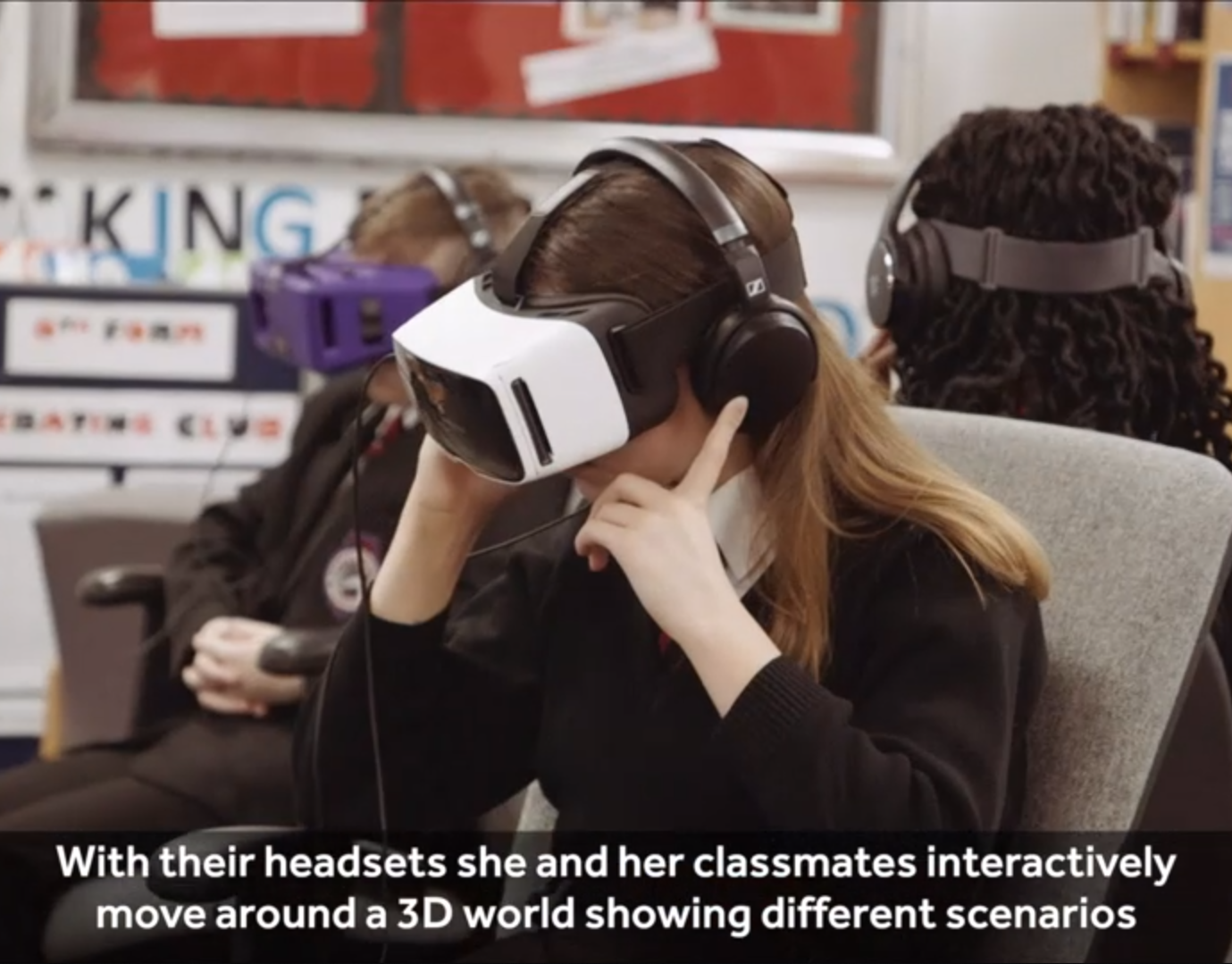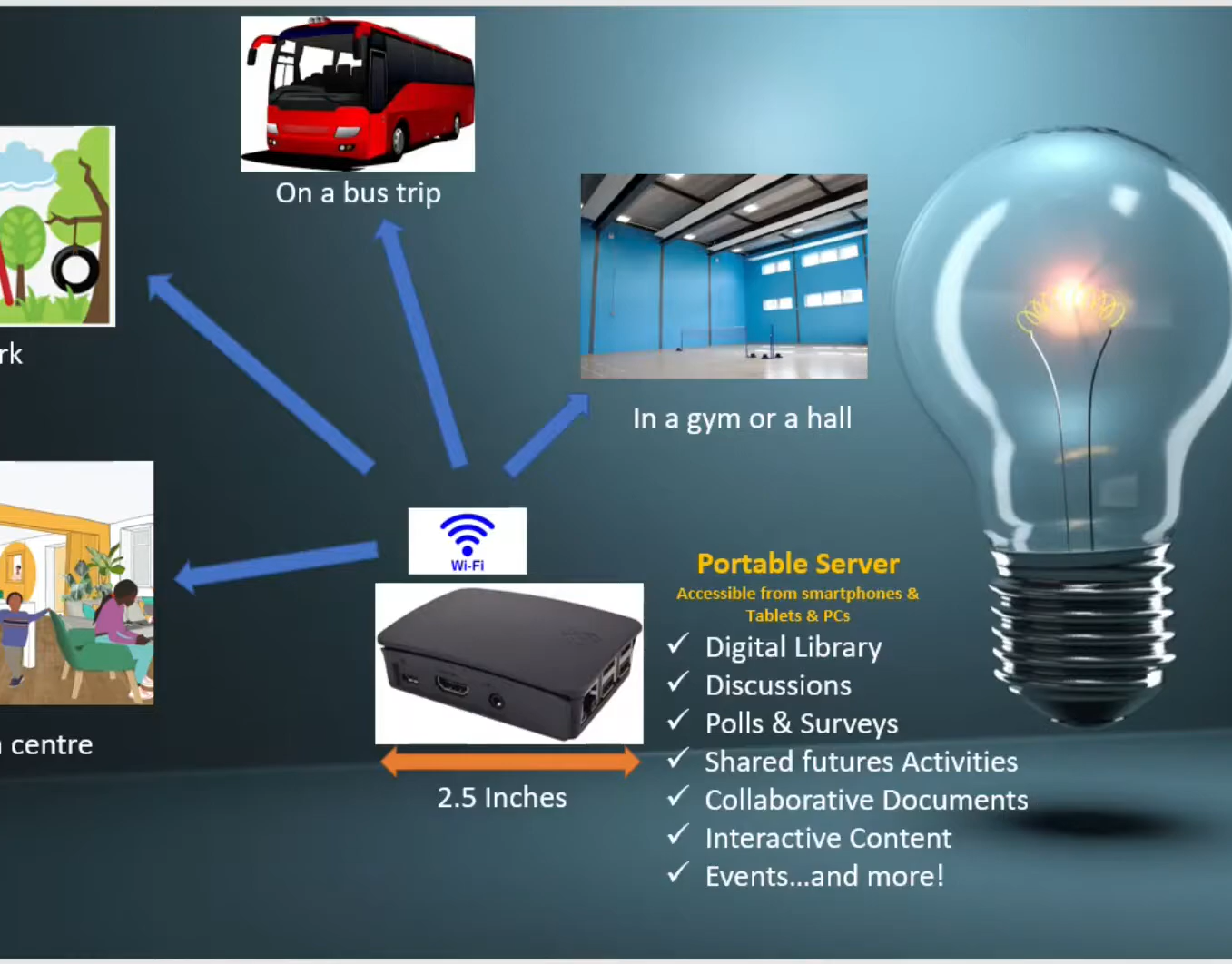Project Overview
In 2017, I was embedded in the Ritsona refugee camp in Greece to research and design alternative ways for displaced children to access learning, especially in environments where formal schooling was inconsistent or unavailable. The project aimed to create a low-cost, low-barrier system that could support self-paced, interest-driven learning in Arabic, Kurdish, and English. My role was end-to-end – from conducting field research and co-design workshops, to facilitating technical implementation and evaluating the system in daily use.
What began as a prototype system inside a single classroom later expanded to additional camps and organisations through funding from NGOs, humanitarian education groups, and government-linked bodies.
Timeline & Process
▪ Initial Field Research (2 months): Conducted ethnographic work, interviews, and informal co-design sessions with children, teachers, NGO workers, and parents inside the camp. Focused on understanding learner motivation, tech familiarity, and trust.
▪ System Design & Prototyping (1.5 months): Co-designed a lightweight, offline-friendly digital platform deployed on tablets, using locally curated content and a simple folder-based navigation system. Content was curated and co-developed with learners – including videos, audio stories, interactive games, and remixable materials.
▪ Implementation & Training (1 month): Deployed the system inside the learning hub and trained facilitators and youth volunteers to support learner use. Iterated weekly based on field feedback.
▪ Evaluation & Expansion: Used observational logs, informal interviews, and learner-generated feedback to measure uptake and impact. The project was later replicated and adapted in other camps due to its success.
Key Contributions
▪ Designed and led the entire research and development process in-field, working in challenging physical and emotional conditions.
▪ Created a fully functional offline digital learning platform using open-source tools and community-sourced content.
▪ Introduced motivational scaffolding based on Self-Determination Theory – giving learners choice, showing progress, and reflecting back stories that looked and sounded like their own.
▪ Facilitated trust-building by including parents and youth volunteers in the process, helping build a sense of ownership and safety around the system.
Outcomes & Impact
▪ The self-learning space became a permanent part of the Ritsona learning hub, operating daily and serving an average of 50 children per day for several years.
▪ The content was continually adapted to respond to learner needs—new materials were co-created with facilitators and youth volunteers, including language-specific resources, audio stories, and games tailored to younger users.
▪ The space promoted independent learning and peer collaboration. Children used the platform outside of formal sessions, often teaching and guiding each other without direct adult supervision.
▪ The participatory model of this project was adopted as a reference by organisations like UNHCR and IOM. Based on its success, similar self-learning hubs were later implemented in other refugee camps across Greece.
▪ The project demonstrated a sustainable, scalable model for digital inclusion in crisis settings—one that didn’t rely on constant external facilitation or expensive infrastructure.
▪ Feedback from learners, parents, and facilitators consistently highlighted increases in learner confidence, self-motivation, and a sense of ownership over their learning journey.
▪ This work directly influenced future funding decisions by humanitarian education stakeholders, and helped shift attention towards participatory, low-tech solutions within humanitarian innovation discussions.
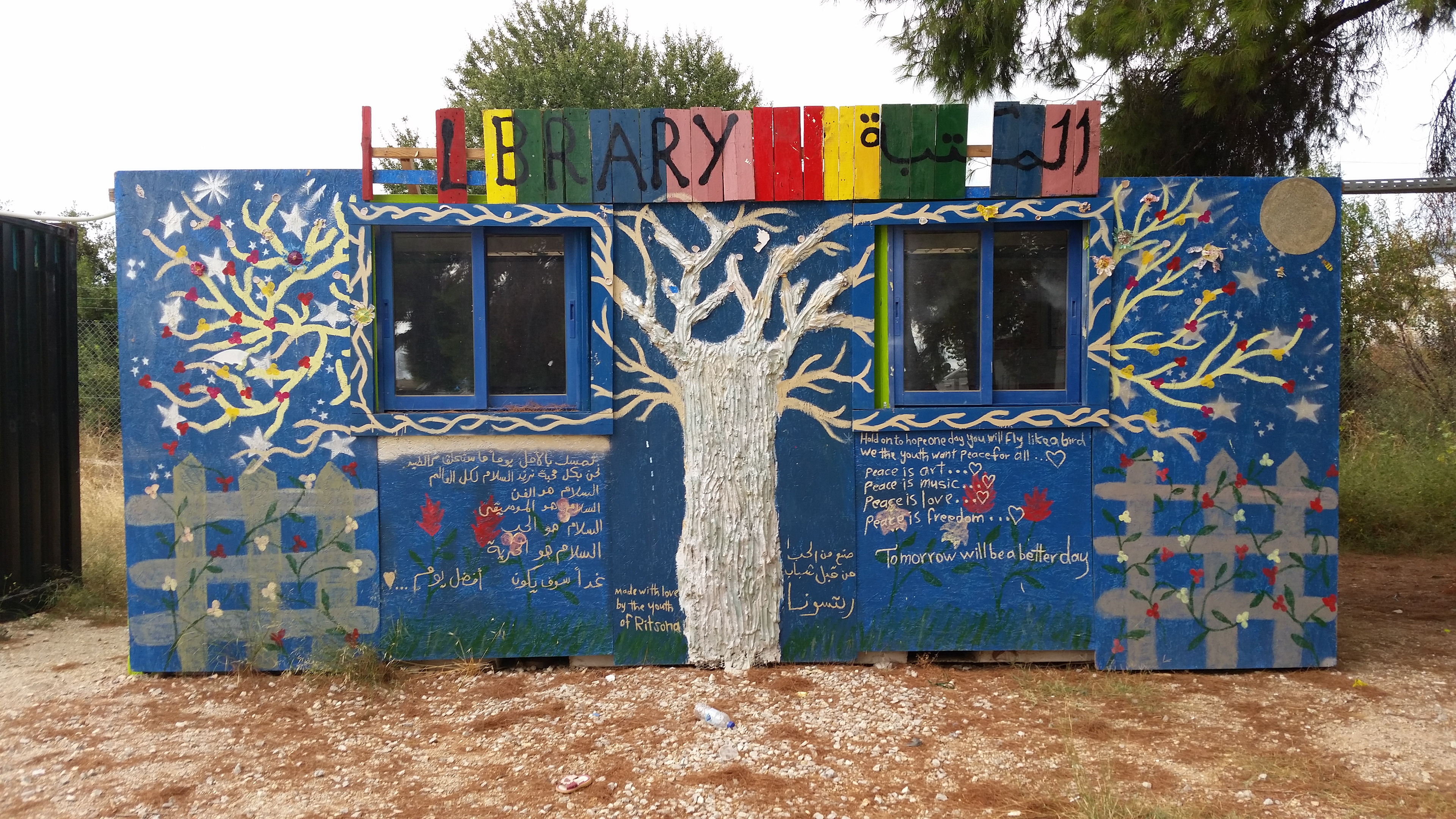
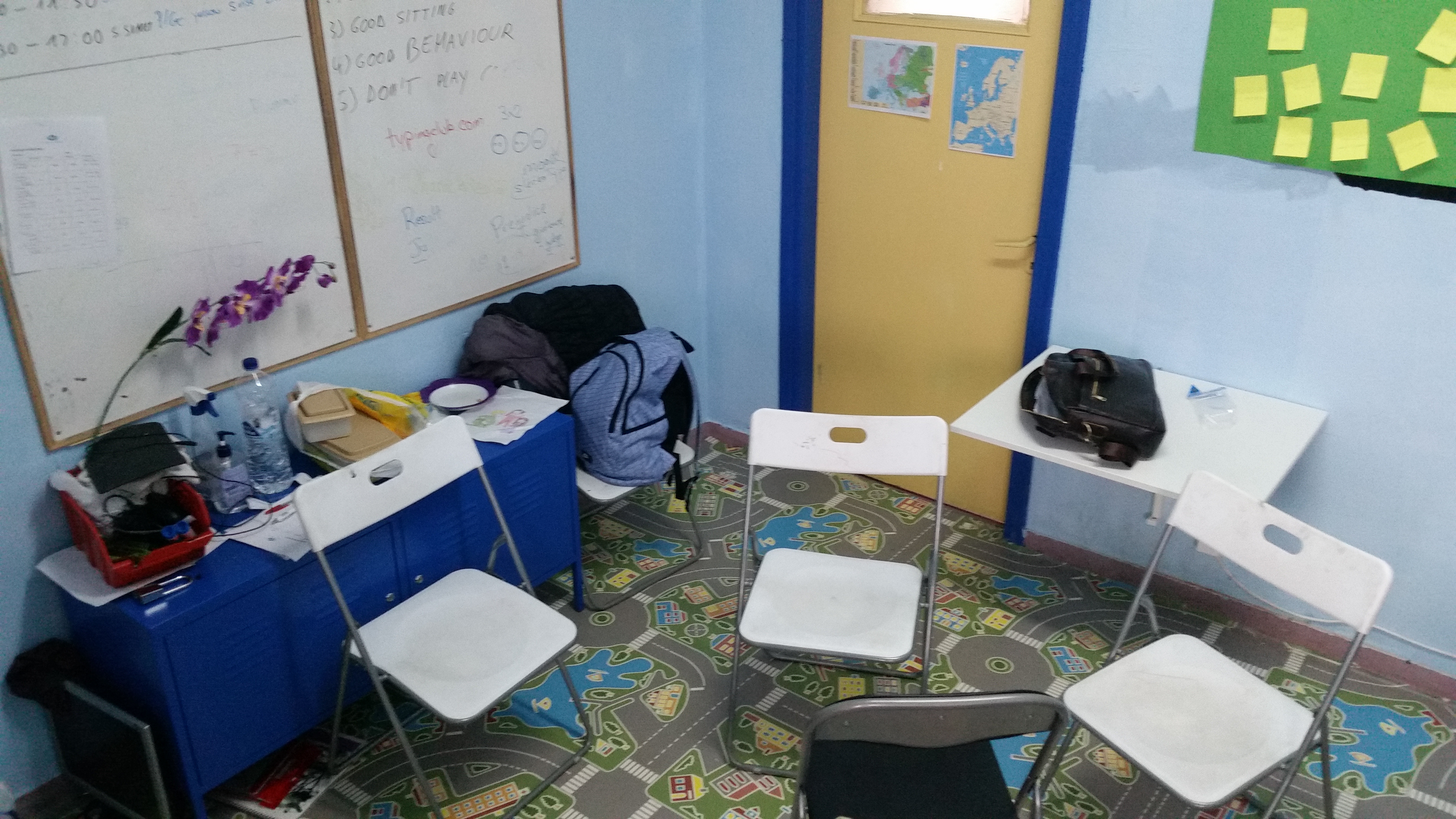
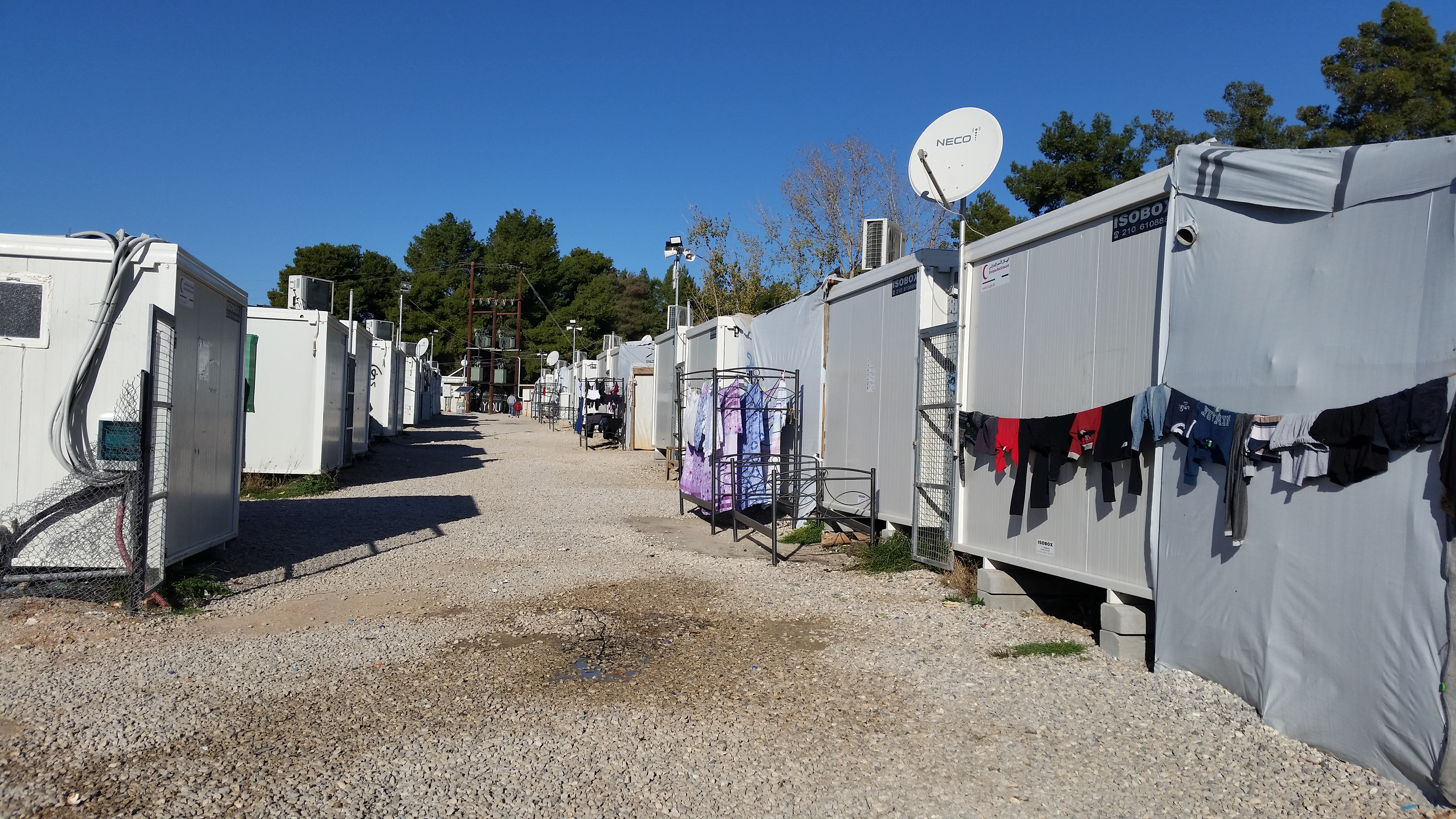
Deep Dive and more details
Contextual Inquiry:
✦ Literature Review: Conducted extensive literature review on the Syrian conflict, displacement, and the refugee camp context.
✦ Ethnographic Research: Engaged in ethnographic activities, including observation, informal interviews, and active participation in the camp to understand the stakeholder groups, their relationships, the power dynamics, and stackholders needs and fears.
Trust and Relationship Building:
✦ Volunteering: Actively participated in camp activities, providing logistical support, translation, and cultural consultation.
✦ Building Trust: Established strong relationships with NGO staff, displaced children, parents, and Greek Ministry of Education representatives through continuous interaction and support.
Problem and Requirement Analysis:
✦ Focus Groups: Conducted focus groups with NGO staff and displaced parents to identify educational needs and challenges.
✦ Semi-Structured Interviews: Held interviews with key stakeholders, including NGO educational advisors and Ministry of Education representatives.
✦ Classroom Observation: Observed educational activities to capture engagement levels and identify challenges.
✦ Children's Activities: Engaged children in group activities, including photography, drawing, and post-it note exercises to understand their educational perspectives and needs.
Participatory Design Workshops:
✦ Children's Workshops: Conducted participatory design workshops where children designed educational systems, focusing on self-learning applications for language learning and engagement.
✦ NGO Staff Workshops: Held participatory design workshops with NGO staff to refine and implement children's designs using available resources.
✦ Iterative Design: Combined insights from children and NGO staff to create practical, user-centered designs.
Implementation and Evaluation:
✦ Digital Self-Learning Space: Created a digital self-learning space using tablets and laptops with educational apps.
✦ Piloting and Testing: Piloted and tested the learning content with children, making iterative improvements based on feedback.
✦ Usability Testing: Conducted usability testing to identify and resolve technical and logistical issues.
✦ Observation and Interviews: Evaluated the system through observation, group interviews with children, and informal interviews with parents and NGO staff.

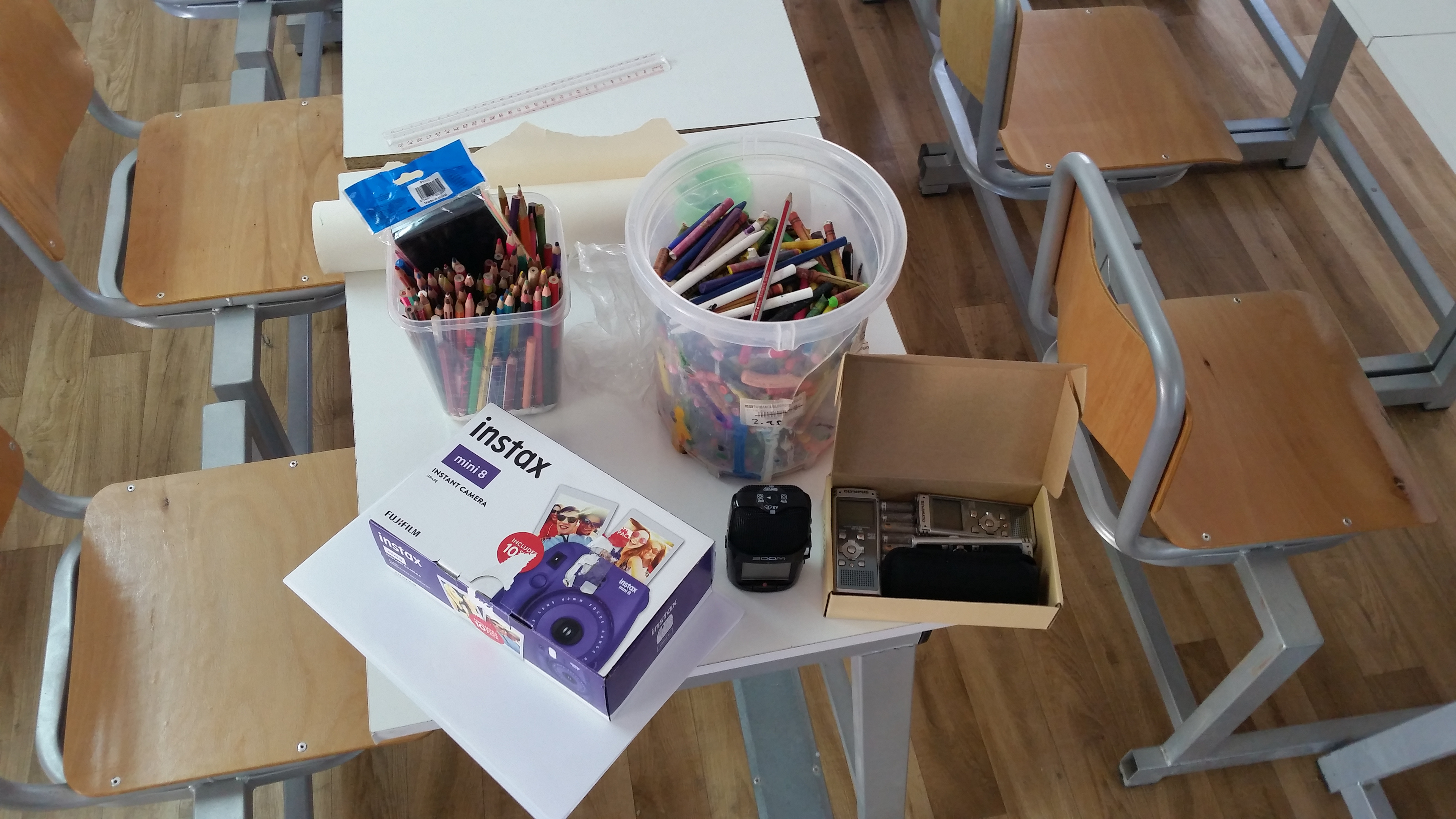
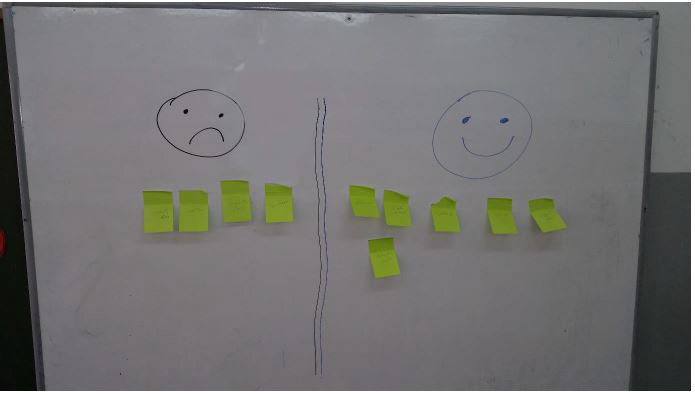
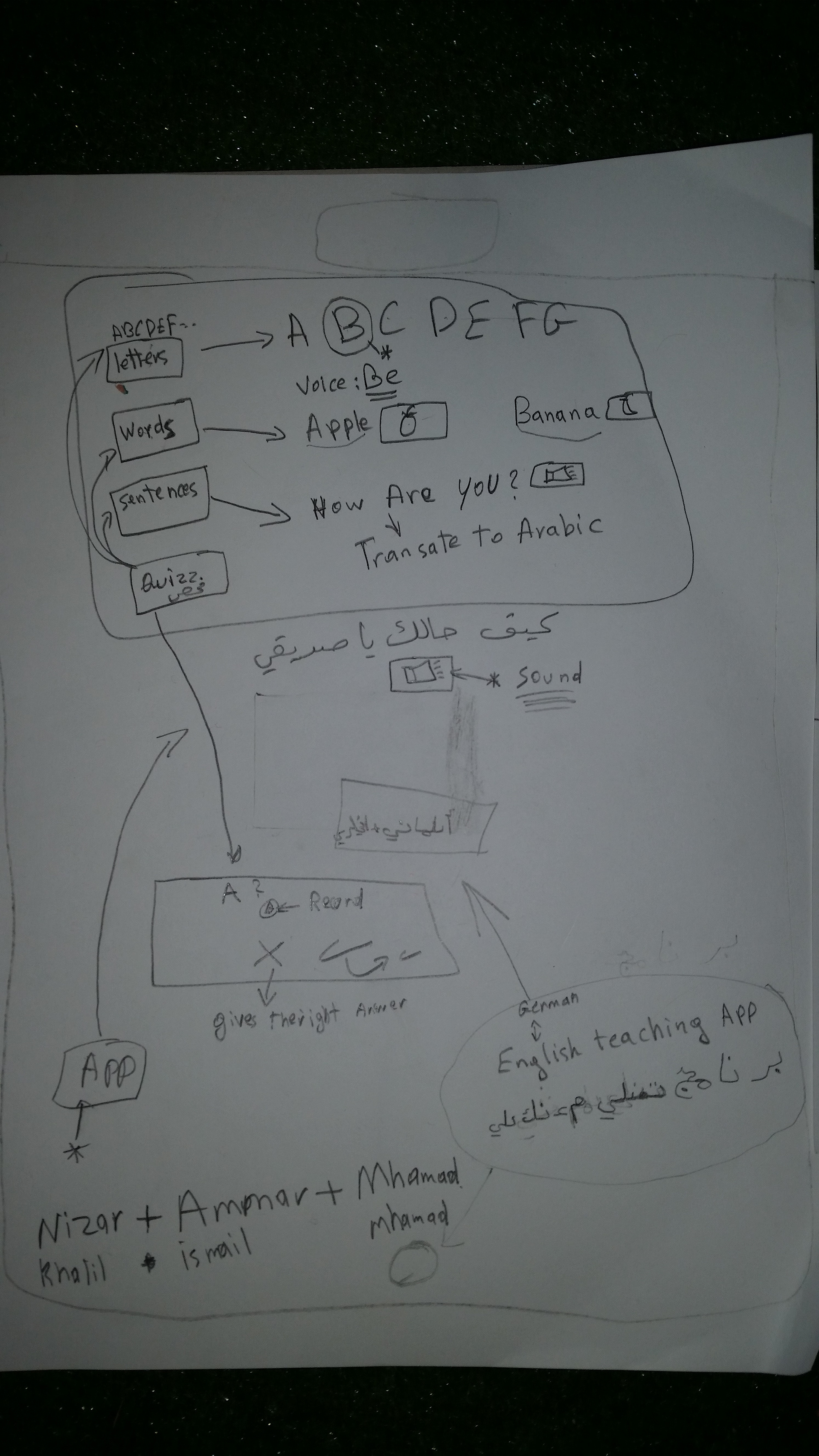
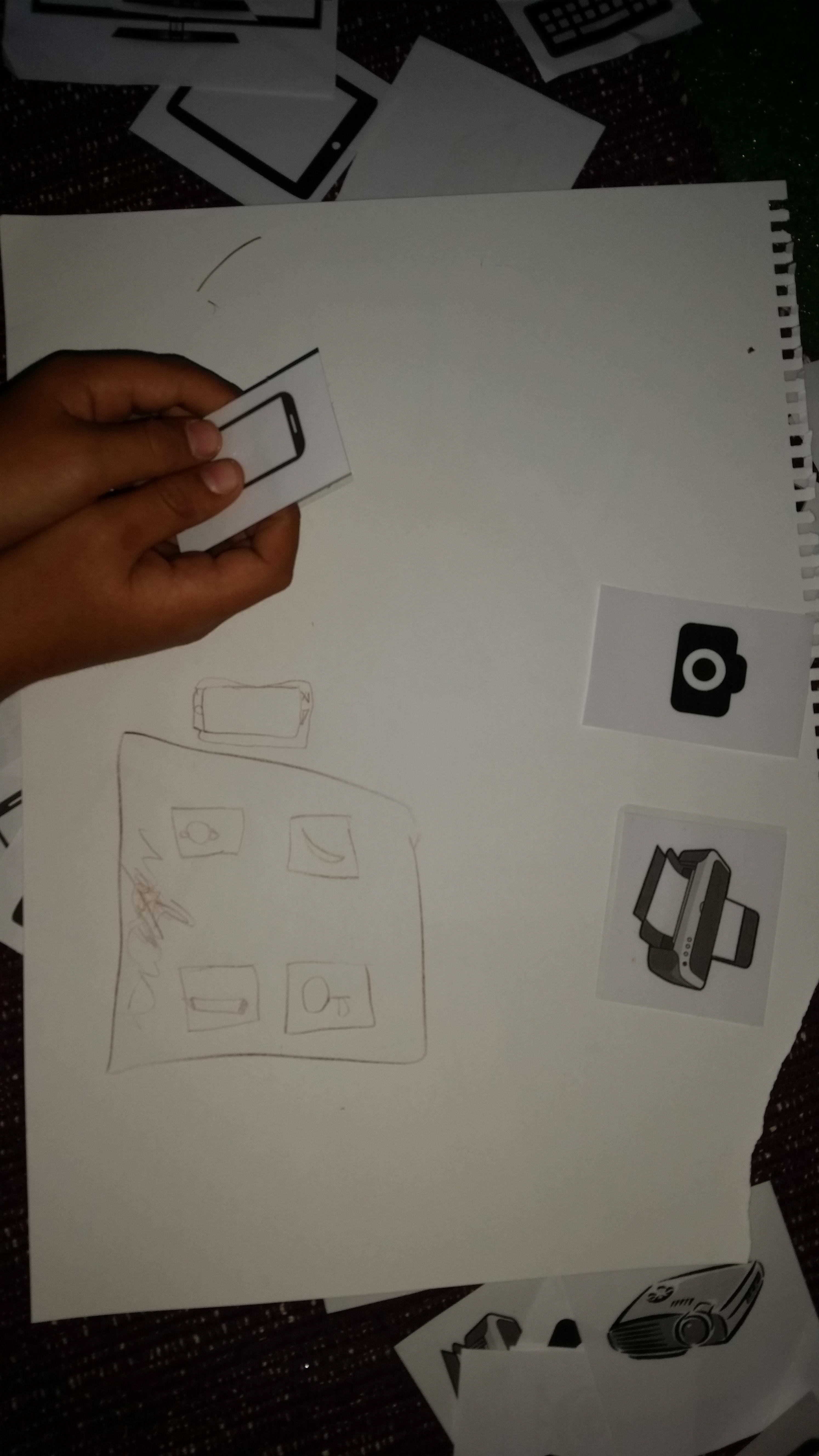

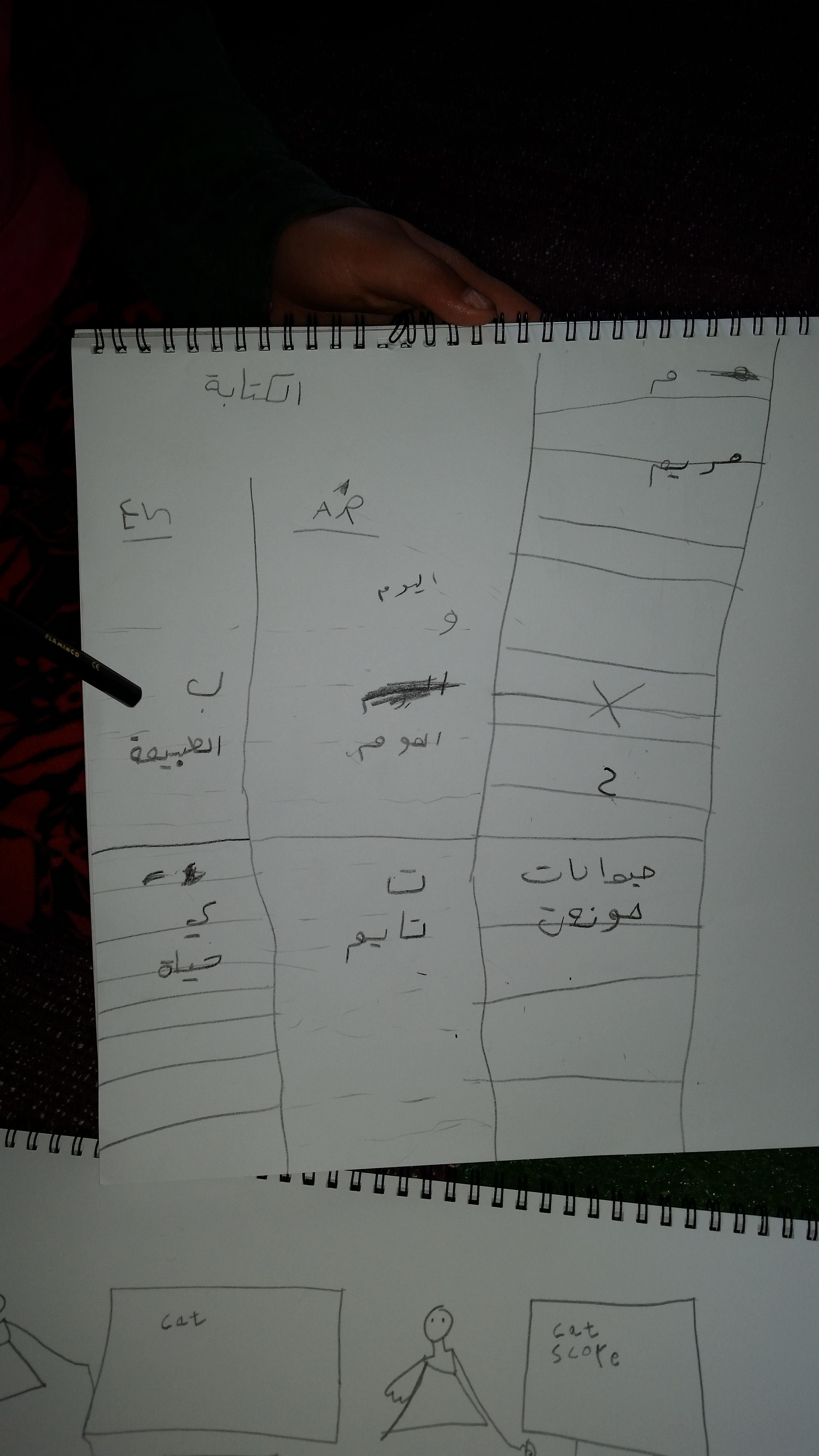


Thematic Analysis
Throughout the project, I conducted extensive data analysis and thematic analysis to understand the diverse and dynamic context of the refugee camp. This analysis focused on various aspects, including the diversity in age groups, needs, languages, cultures, and digital literacy levels. We also examined the psycho-social aspects and effects, as well as the continuous change in actors and users. By analyzing these themes, we gained a comprehensive understanding of the context, stakeholders, and user groups. This informed our design decisions, ensuring that the apps and educational content were tailored to effectively tackle the discovered challenges and provide an inclusive and effective learning experience.
Thematic Map Example
Challenges and Solution
Language Barriers: Overcame communication challenges by using translation apps and involving bilingual volunteers.
Resource Constraints: Addressed the lack of resources by leveraging donated tablets and laptops, and using open-source educational content.
Behavioral Issues: Managed behavioral challenges by designing engaging, interactive content that kept children focused and motivated.
Cultural Sensitivities: Navigated cultural differences by building trust and understanding through continuous interaction and respect for cultural norms.
Technical Literacy: Enhanced the digital literacy of both children and NGO staff through training and hands-on workshops.
Groupwork Difficulties: Used the "Mixing Ideas" technique to allow different ideas to be mixed without the need for participants to work together, addressing collaboration challenges.
Implementation: Created a local WiFi system using routers and extenders connected to a laptop server, providing access to educational content without internet connectivity.
Designed Apps Examples


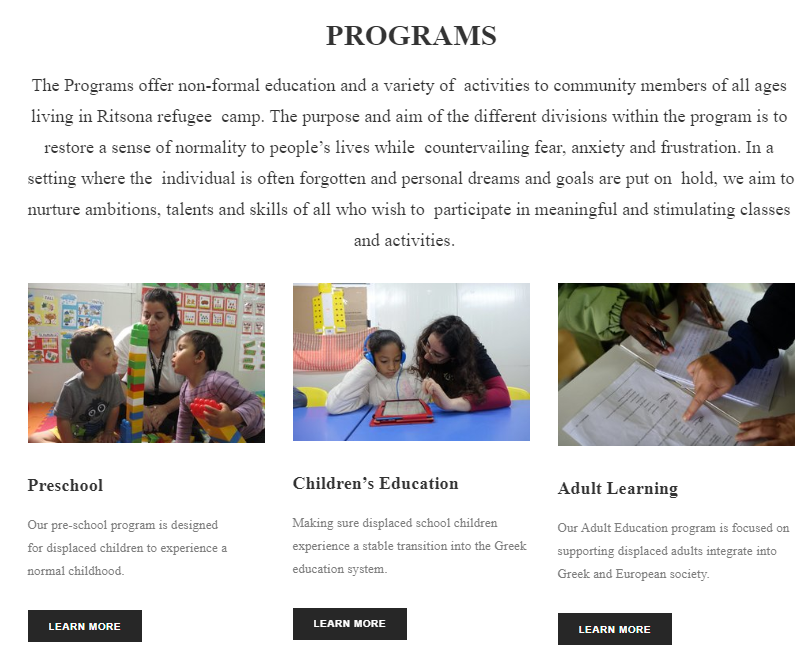
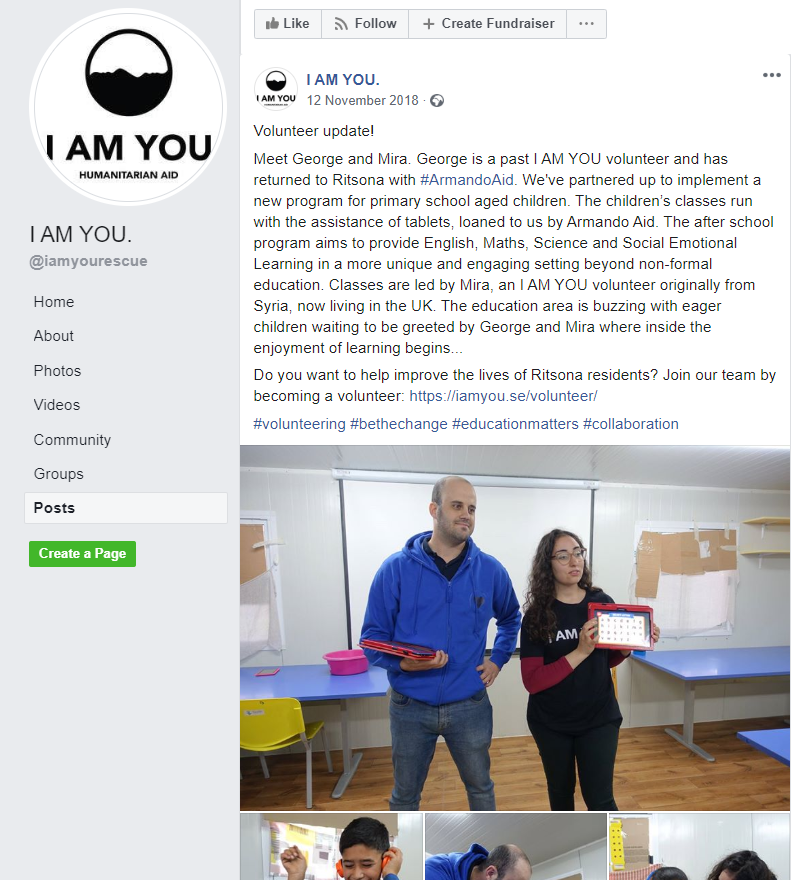
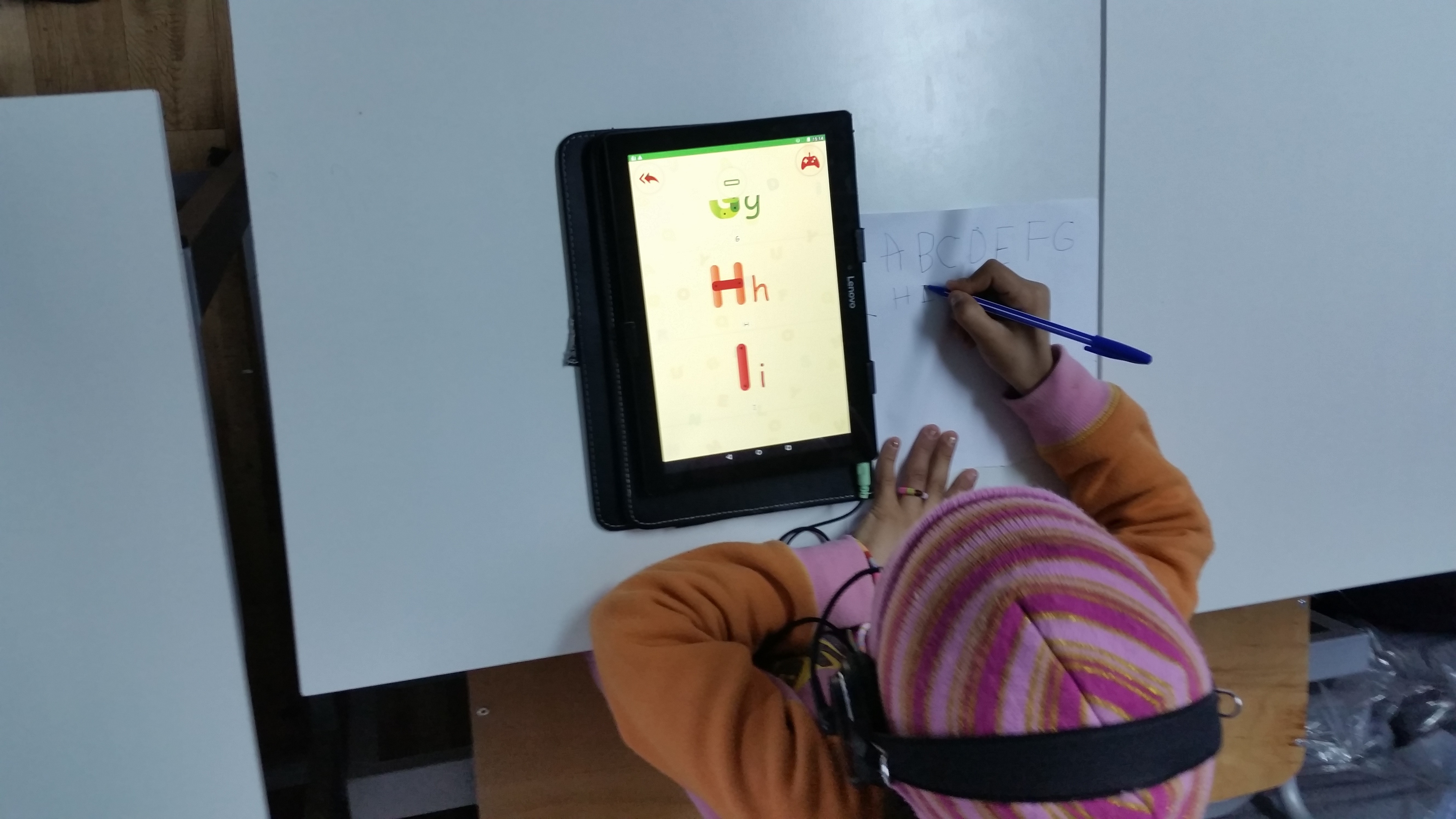
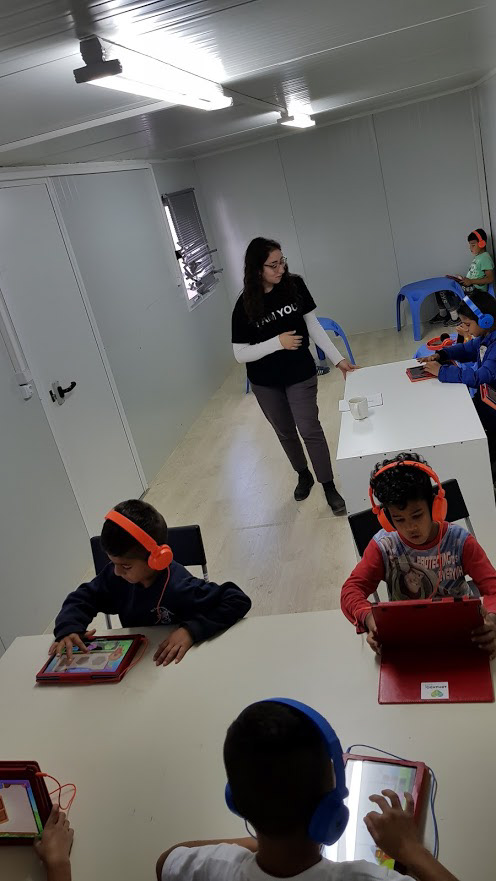

Outcome and Impact
Educational Opportunities
✦Provided essential educational opportunities for children in the Ritsona refugee camp, where other learning options were scarce.
✦Allowed children to continue their education, preventing them from falling behind.
Broadened Exposure
✦Significantly broadened the children's exposure beyond the camp.
✦Integrated technology with traditional educational methods, introducing new ways of learning and interacting with content.
✦Enhanced children's cognitive and social development.
High Engagement
✦Observed high engagement levels, with children motivated and eager to learn.
✦Supported children's ability to join formal schools later, helping them develop necessary skills and confidence.
Community Acceptance
✦Widely accepted and cherished by parents and NGOs.
✦High attendance rates and positive feedback demonstrated the community's appreciation.
✦Children enjoyed the blend of technology and traditional learning methods.
Expansion and Sustainability
Expansion and Sustainability
✦Success led to the adaptation and expansion of self-learning spaces to other refugee camps.
✦NGOs secured additional funding to replicate the concept, ensuring more children benefited.
✦Created training materials for volunteers and social workers to manage these spaces effectively.
Overall Impact
✦Provided a vital educational lifeline, fostering a love for learning and equipping children with skills for future success.
✦The project's impact continues, serving as a model for similar initiatives in other refugee settings.
Reflection
This project was a profound learning experience that highlighted the importance of user-centered design and participatory methods in creating effective educational solutions for marginalized communities. Here are some key takeaways:
User-Centered Design: Understanding and addressing the specific needs of users is crucial. By involving children and adults in the design process, we ensured that the solutions were relevant and engaging.
Ethnographic Research: Conducting in-depth field research provided valuable insights into the cultural and social dynamics of the refugee camp, which informed our design decisions.
Participatory Design: Facilitating participatory design workshops allowed us to incorporate user feedback directly into the design process, resulting in more effective and user-friendly solutions.
Prototyping and Testing: Developing and iterating on prototypes based on user testing helped us refine the solutions and address any usability issues.
Stakeholder Management: Collaborating with diverse stakeholders, including NGO staff, displaced families, and government representatives, was essential for the project's success. Building trust and maintaining open communication were key components.
Adaptability and Creativity: Working in a resource-constrained environment required creative problem-solving and adaptability. Leveraging available resources and open-source content enabled us to deliver impactful solutions despite the limitations.
Publication: The success of this project led to the publication of a “motivation-led participatory design process” for settings with low resources, sensitive stakeholder relationships, marginalized communities, and limited digital literacy.
As a researcher, I learned the importance of focusing on people more than technology. Understanding users, their motivations, fears, and needs is essential to designing effective solutions. This project shifted my perspective from a technology-centric approach to a people-centric approach, emphasizing that technology should serve the users, not the other way around. By prioritizing the human aspect, we were able to create solutions that truly addressed the needs and challenges of the refugee children and their families.
Overall, this project demonstrated the power of participatory design and user-centered approaches in creating meaningful and sustainable educational solutions for vulnerable populations. It reinforced the importance of empathy, collaboration, and adaptability in UX research and design.
